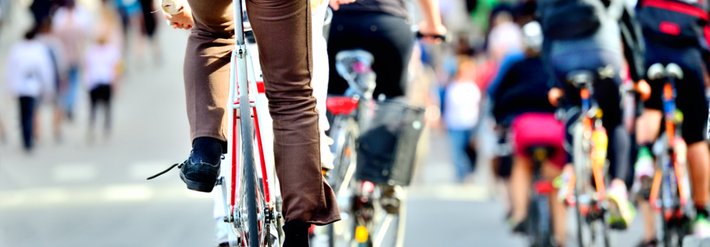Bicycling Insights, Knowledge and Evaluation™ (BIKE™)
You are welcome to contact Hermes Traffic Intelligence to learn more about the use of BIKE™ data:
Follow the link below to request a quote for BIKE:
With the BIKE™ service we bring bicycle data from a number of providers to end-users at the municipal level. The service is not yet released, and some of the descriptions may change. We are currently working with international partners in developing the eco-system that will provide bicycle data to your municipality.
The BIKE™ eco-system
The BIKE™ eco-system is a collaboration between different providers of bicycle data from e.g. smart devices mounted on bicycles, or trackers installed within the bicycles. Currently (January 2023) no formal eco-system has been established, and thus we are looking for interested partners within data supply (smart devices, etc.), distribution, and customers/end-users (municipalities/road administrators). If your organisation would like to join the eco-system, know of someone who would be a good partner, or if you just want to know more, do not hesitate to contact us.
Data
Data collected and concentrated by the BIKE™ service originates from different providers dependent on availability in the customer areas. Data are produced in smart devices, either mounted on bicycles or worn by cyclists. The primary data providers for BIKE™ are product driven companies that through their market impact for bicycles and reporting capabilities from their devices receive the necessary data.
If the amount of local data is insufficient, the end-customer (e.g. a municipality) may increase the amount by simply investing in a number of data delivering smart devices into the local community. These devices might be handed out to employees who are part of the bicycling community, or can be distributed by local competitions.
The raw privacy compliant trace dust from the bicyclist can be used for a variety of specific use cases, which we have split into seperate streams:
- Floating Bike Data (FBD) - segment travel times and speeds
- Bicycle Route Choice (BRC) - trace data on the route choices in the infrastructute
- Bicycle Safety Data (BSD) - grey spot and risk zone detection
- Real Time Arrival Estimates (RTA) - arrival times estimates for e.g. intersection green time extension
- Historic Raw Data (HRD) - privacy compliant historic data source for post processing targeting specific or highly detailed decision support
- Near Real time raw Data (NRD) - privacy compliant real time position data for dedicated processing chains.
Views
The received data is processed into different views provided for the recipient. The list below describes some of the views intended to be available through the BIKE™ service. The list is not exclusive, and other views may be added.
- Travel times. (Near) real-time travel times can be used to build an overview of the current congestion or delays on the bike-paths. Historical travel times can be used for statistical purposes, e.g. to find areas for optimization, or to evaluate current improvements.
- Routes. By following cyclists from the origin to the destination of their routes it is possible to find popular routes. Analysis of these can also be used to find e.g. areas or routes avoided by cyclists.
- OD matrices. Origin/Destination matrices, showing both the number of cyclists travelling from one area to another, as well as their travel times, will help in understanding the need for improved infrastructure in some areas.
- Pop-up bike-paths. During the covid-19 pandemic some cities have arranged temporary pop-up bike paths in the boulevards usually reserved for car travel. By mapping the tracks of the bicycles in the area it is possible to find the exact location of these paths. Even if the locations of intended pop-up paths are known, new paths, decided by the cyclists, may exist.
- Hotspots. One reason for using the bicycle instead of e.g. the bus is to avoid being close to other people and running the risk of being infected. Therefore, collecting a large number of cyclists in hotspots is to be avoided. This requires that the road administrator knows the location of the hotspots. These can be found either in (near) real-time or historically.
- Distributed counts. If a reasonable number of road side bike counters are fused into the above data, fully covering bike counts can be estimated to some extent across the bike path network. This will provide extended insights as soon as the saturation of enabled bikes reaches a sufficient level.

